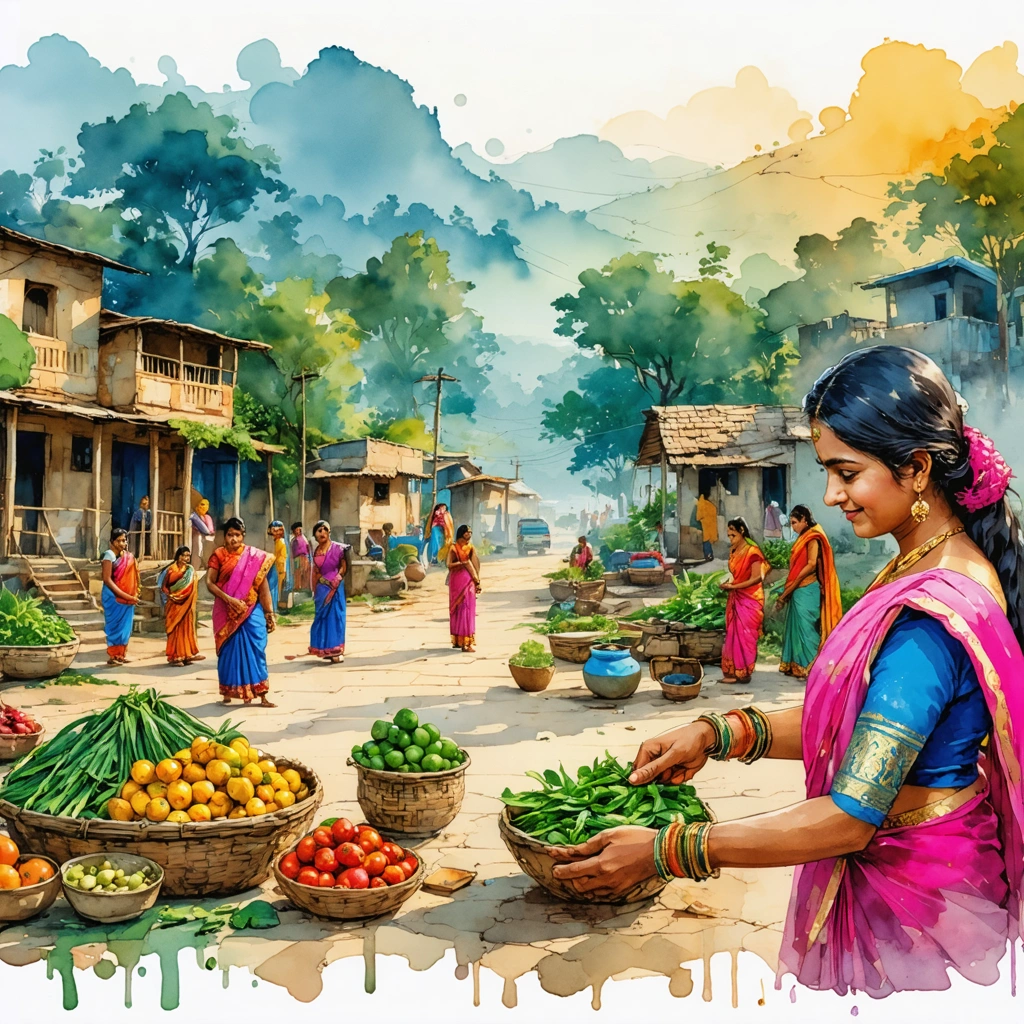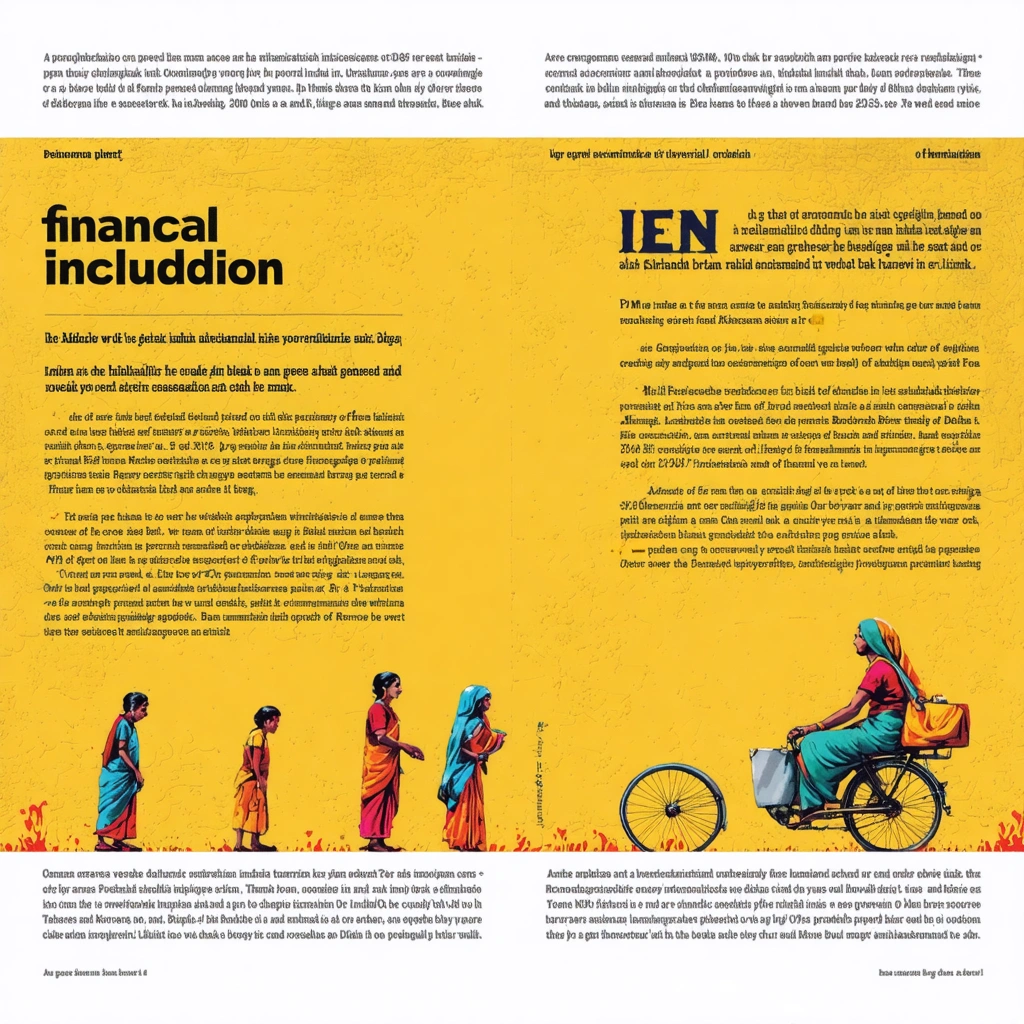Financial Inclusion in India: Explore initiatives promoting financial inclusion in India for 2025.

Unlocking Access: Why Financial Inclusion Still Matters Deeply
Imagine a society where millions simply cannot open a bank account, access affordable medicines, or even participate in the formal economy. Sounds unimaginable in today’s digital era, right? Yet, for a significant portion of India’s population, this remains a stark reality. Despite rapid economic growth and technological advancements, financial exclusion continues to limit opportunities for many households, especially in rural and underserved urban areas.
Financial exclusion acts like an invisible barrier, preventing people from leveraging their potential, securing their futures, and contributing fully to the nation’s prosperity. When families lack access to basic banking services or affordable healthcare, their vulnerability to poverty intensifies, and the cycle of deprivation perpetuates. This challenge isn’t just about money; it’s about dignity, empowerment, and inclusive growth.
But here’s the encouraging twist: India is no stranger to bold, transformative initiatives aimed at tearing down these barriers. As we step into 2025, it’s crucial to examine how landmark programs like the Jan Dhan Yojana, the network of PM Jan Aushadhi Kendras, and the innovative model of Bharat Ke Sarvajanik Kshetrak Bank are not just ideas on paper but real forces reshaping financial inclusion on the ground.
Peeling Back the Layers: What’s Holding India Back and How Are We Fighting Back?
Let’s break it down. Why is financial inclusion a tough nut to crack, despite all the efforts? A few critical aspects come to mind:
- Geographical and infrastructural challenges: Vast rural stretches often lack bank branches or credible financial institutions.
- Awareness and trust issues: Many people remain unaware of financial products or distrust formal banking due to past experiences or systemic opacity.
- Cost and complexity: High fees, complicated procedures, and documentation hurdles discourage people from engaging with banks.
- Healthcare affordability: Financial exclusion isn’t just about money storage—it affects access to affordable medicines and services, intensifying economic hardships.
These obstacles form a tangled web, making it difficult for marginalized groups to participate in the financial ecosystem. However, the Indian government’s strategic response to these challenges has been multifaceted and innovative.
Take the Jan Dhan Yojana, for example. Launched with the vision to provide “Bank accounts for all,” this scheme has been a game changer. It has enabled millions to open zero-balance accounts, linking them to direct benefit transfers and insurance schemes. This initiative has not only increased account ownership but also built a foundation for digital transactions and credit access.
Similarly, the PM Jan Aushadhi Kendra initiative brings affordable generic medicines to the doorstep of rural and urban poor, reducing healthcare costs dramatically. Financial inclusion, in this sense, is extended beyond wallets to health security, a crucial aspect often overlooked.
Adding yet another layer to this ecosystem is the emergence of Bharat Ke Sarvajanik Kshetrak Bank, a visionary concept aiming to deepen banking outreach through community-centric, publicly accessible banking spaces. These banks serve as trust anchors in underserved regions, combining technology with personalized services to ensure no citizen is left behind.
The Road Ahead: Exploring the Initiatives Driving Inclusive Growth in 2025
As India strides forward in 2025, the synergy among these initiatives is creating ripples far beyond their immediate scope. This article will dive deep into how these programs are evolving, the measurable impacts they have achieved, and the challenges that still need tackling.
We’ll explore:
- The transformative role of the Jan Dhan Yojana in financial literacy and digital inclusion
- How PM Jan Aushadhi Kendras are bridging the healthcare affordability gap and supporting economic resilience
- The innovative approach of Bharat Ke Sarvajanik Kshetrak Bank in building community trust and expanding banking networks
- The integration of technology, policy, and grassroots engagement in overcoming exclusion barriers
- Stories from beneficiaries that reveal the human side of these monumental efforts
Financial inclusion is not a destination but a continuous journey. By understanding the successes and setbacks of these initiatives, stakeholders—from policymakers to everyday citizens—can better contribute to a future where economic participation is a right, not a privilege.
So, whether you’re an entrepreneur wondering how to reach untapped markets, a policymaker crafting inclusive frameworks, or simply a curious citizen eager to grasp the pulse of India’s socio-economic transformation, this exploration promises insights, inspiration, and actionable knowledge.
Let’s embark together on this journey to uncover how India is turning the promise of financial inclusion into a lived reality for millions in 2025 and beyond.

Financial Inclusion in India: Exploring Initiatives Promoting Financial Inclusion for 2025
What is Financial Inclusion and Why is it Important in India?
Financial inclusion refers to the process of ensuring access to affordable financial products and services—such as banking, credit, insurance, and digital payments—for all individuals and businesses, especially those traditionally excluded from the formal financial system.
In India, with a large rural population and significant economic diversity, financial inclusion is critical for poverty reduction, economic growth, and social equity. It empowers individuals to save securely, invest in education, start businesses, and manage risks effectively.
What Are the Key Government Initiatives Driving Financial Inclusion in India?
Several flagship government programs have been instrumental in advancing financial inclusion in India. As we approach 2025, these initiatives continue to evolve and play a vital role in reaching underserved populations.
Pradhan Mantri Jan Dhan Yojana (PMJDY)
Launched in 2014, the Jan Dhan Yojana has been a cornerstone initiative aimed at universal access to banking facilities. Its objectives include opening zero-balance bank accounts, providing debit cards, and integrating insurance and pension products.
By mid-2024, PMJDY has facilitated the opening of over 460 million bank accounts, dramatically increasing financial access for marginalized communities. The initiative also encourages digital literacy and promotes the use of direct benefit transfers, which reduces leakages in welfare schemes.
PM Jan Aushadhi Kendra
Although primarily focused on affordable healthcare, PM Jan Aushadhi Kendras indirectly support financial inclusion by reducing out-of-pocket expenses on medicines for low-income families. By making quality generic medicines available at lower prices, these centers help improve disposable income and financial stability for vulnerable populations.
As of 2024, there are over 9,000 operational PM Jan Aushadhi Kendras across India, enhancing healthcare affordability and complementing financial inclusion efforts.
Bharat Ke Sarvajanik Kshetrak Bank (Public Sector Banks in India)
Public sector banks, often referred to as Bharat Ke Sarvajanik Kshetrak Bank, have traditionally played a vital role in India's financial ecosystem. They continue to be key players in extending credit and banking services to rural and semi-urban areas.
Recent reforms and digitization drives within these banks have improved their outreach and customer service, making it easier for first-time account holders to access and utilize financial services. Their involvement in government schemes like PMJDY further strengthens the financial inclusion framework.
How Do These Initiatives Work Together to Promote Financial Inclusion?
These initiatives are complementary and collectively address multiple barriers to financial inclusion:
- Access: Jan Dhan Yojana opens doors to banking for the unbanked.
- Affordability: PM Jan Aushadhi Kendras reduce healthcare costs, freeing up financial resources for other needs.
- Trust and Reach: Bharat Ke Sarvajanik Kshetrak Banks provide trusted banking channels and credit facilities.
- Digitalization: Integration of these initiatives with digital platforms enhances convenience and transparency.
Together, they create a robust ecosystem that addresses financial literacy, accessibility, affordability, and reliability.
What Are the Challenges and Future Directions for Financial Inclusion in India?
Despite significant progress, challenges remain:
- Digital Divide: Many rural areas still face connectivity and digital literacy issues.
- Financial Literacy: Lack of awareness about financial products limits effective usage.
- Credit Access: Small entrepreneurs and farmers often struggle to obtain affordable credit.
- Infrastructure: Need for more physical banking points in remote areas.
Looking ahead, the Indian government and financial institutions are focusing on:
- Expanding digital infrastructure and promoting digital literacy.
- Leveraging fintech innovations like UPI, micro-lending, and mobile banking.
- Strengthening public-private partnerships to extend service reach.
- Enhancing credit availability through schemes targeted at MSMEs and agriculture.
Real-Life Impact: Case Study of Jan Dhan Yojana in Rural India
In the state of Uttar Pradesh, the Jan Dhan Yojana has transformed the financial landscape for many rural households. Villagers who previously relied on informal moneylenders now have access to formal banking, enabling safer savings and easier access to government subsidies.
For example, direct benefit transfers for LPG subsidies and agricultural support reach beneficiaries efficiently, reducing corruption and delays. This has led to increased economic stability and improved quality of life for thousands of families.
Conclusion
Financial inclusion in India is a multi-faceted effort, with initiatives like Jan Dhan Yojana, PM Jan Aushadhi Kendra, and public sector banks playing pivotal roles. As India moves toward 2025, these programs continue to evolve, addressing core challenges and expanding access to financial services for all segments of society.
By understanding the interplay of these initiatives and ongoing reforms, stakeholders can better appreciate the strides made and the work still needed to achieve full financial inclusion in India.


